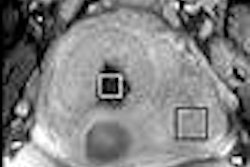Perhaps it's a little boy thing, but we remember times in our youth when we'd shuffle our stocking feet through deep carpet, then run through the house trying to "zap" siblings or unsuspecting parents with a static electric charge. As games go it didn't last too long; all you had to show for all your effort was a horrible case of static-induced bed-head and mild carpet burns on your feet.
It wasn't until recently that the whole idea of static electricity rekindled that same level of excitement that it did when we were 7 years old. It happened when a client of ours called because one of their coils kept failing. The group had received a report from the MRI system vendor attributing the damage to static electric discharge.
The coil, a phased-array neurovascular coil, had been provided by the vendor as a part of the system purchase. The coil had been failing twice a year, but more recently had accelerated its demise by failing roughly once a month. Eventually, the MRI vendor got tired of taking the coil back and refurbishing it under the service agreement, and sent a small team with white lab coats to determine what -- at the client's site -- was causing the repeated failure.
The engineering report indicated that the levels of measured static buildup were several times higher than the allowable environmental conditions for the MRI dictated. This was clear from the visible sparks that would be generated when the technologist entered the magnet room and touched the patient table (a trick they ritualized after having given a couple of patients an unexpected zap).
The report also indicated that the humidity levels, which significantly influence static capacity, were only a couple of percentage points below the design tolerances. The vendor determined that the cause of the static discharge, and ultimately the damage to the coil they provided, was the flooring material.
Because all other elements of the suite design and construction met the vendors' requirements, and there had not been a specific vendor requirement for a static-dissipating (SD) floor, the vendor offered to provide the facility with enough SD floor tile to refloor the hospital's magnet room. However, this offer also came with an ultimatum: If the hospital did not install the SD floor and alleviate the static problem, the vendor would exclude the failing neurovascular coil from the service agreement. It was at this point that the head technologist contacted us to ask about what would be involved in replacing the original floor.
To install a static-dissipating floor, you need to lay the electrically conductive floor tiles on strips of copper foil that are joined and grounded. To get the benefit of either an installer's or a manufacturer's warrantee, installing the new floor requires that the old floor be torn up -- with tools that are all ferromagnetic. Therefore, working in the magnet room also requires ramping down the magnet (about a $10,000 service call).
Tearing up the existing flooring would normally take about a day, but given the extra care required to protect a million-dollar MRI system, two days should be budgeted. The grout floor needs to be prepared, and the copper strips grounded to the radiofrequency (RF) shield. This requires punching holes through the walls to attach the strips to the RF shield assembly, being careful not to damage the shield.
Next the new SD flooring has to be laid, and once that is done, the room has to sit unused for at least 48 hours while the adhesive sets. The magnet is then ramped back up and reshimmed (somewhere in the range of $15,000). And throughout this ordeal, the hospital wouldn't be able to scan a single patient.
So, the generous offer of $2,000 worth of SD floor tile from the MRI system vendor would have cost the hospital around $100,000 in direct expenses and lost revenue! It would have been cheaper for the hospital to buy two replacement coils themselves, at $35,000 apiece, than to take the "free" floor tile.
It turns out that this one coil -- of the eight or so that were frequently used on this MRI -- was the only one that was failing. The MRI vendor couldn't explain why only the neurovascular phased-array coil was being damaged and the others, which had been in constant use for nearly three years, showed no signs of failure.
We recommended that the hospital write a letter to the MRI vendor stating that it would be willing to install the vendor's flooring, if the vendor would stipulate the following:
- The flooring was conclusively the source of the problem.
- Should any other static damage occur to any of the components after the new flooring was installed, the MRI vendor would assume all costs for the flooring replacement, including lost revenue.
I don't know whether it was that letter, or the fact that this client is currently evaluating the purchase of two new MRI systems, but the vendor quickly became open to alternative solutions. The vendor agreed to replace the neurovascular coil with one from another manufacturer, hinting that the circuitry on the one that was initially provided "lacked robustness." So the hospital keeps its floor and gets a replacement coil -- a happy ending, right?
Even if the original coil was a dud, zapping patients with static discharge was still a problem. We dug into the specifications for the flooring that was installed, and found it was astatic -- it neither insulated you from ground (allowing you to build up greater and greater static charges), nor was it conductive (allowing the static energy to pass through the soles of your feet, which is what static-dissipating flooring does). It was in the middle.
The flooring allowed you to retain some static electric charge, but when the charge reached a level to which it could really shock someone, the extra energy should have passed through the floor, leaving you with some but not a significant amount of static electric potential. But the static electricity measurements from the MRI vendor's investigations were considerably higher than they were supposed to be possible with this flooring.
This saga of static electric coil damage revealed, at its heart, a fundamental problem with MRI facilities -- keeping them clean. The dirt that we each track in on our shoes builds up a thin film on a floor. That dirty film, as it turns out, is a fairly effective electrical insulator. Even the most electrically conductive SD floor is rendered useless by a mil of translucent dust, creating an environment where static buildup is more likely.
If infection control by itself isn't a sufficient motivator (see our June MRI Newsletter article, "Housekeeping Services," for more on infection control issues), it is clear that the cleanliness of MRI suites has a direct impact on the operation of the MRI equipment.
There are all manner of specialty floor cleaners. We helped this facility find one that is specifically formulated to enhance static dissipation in astatic and SD flooring. Even when diluted to half-strength, many of these cleaners can still provide significant protection against static buildup. Even though these specialty cleaners are marginally more expensive, given the costs of MRI equipment they are probably a very wise investment in terms of preventive maintenance.
So instead of being coerced into a flooring replacement, a few hours of our services provided an alternate solution to the $100,000 renovation and weeks of disruption. As it turns out, the long-term solution to static electric damage to the MRI coil at this hospital may turn out to be a bucket of sudsy water and a quick pass with an MR-safe sponge mop. Given the rarity of housekeeping activities in many MRI suites, a good floor cleaning is probably long overdue!
This incident demonstrates, again, how interdependent MRI equipment and the MRI suite are. Sometimes this means that problems with MRI equipment aren't problems with the equipment at all, rather problems with the design, construction, and maintenance of the suite. It also means that sometimes you need to look beyond the MRI vendor and get independent expert advice. When inaccurately diagnosed, the proposed solutions can quickly drain tens of thousands of dollars and still fail to solve the problem. It is in these situations that a combination of advocacy and expert advice can save facilities a great deal of money and protect a vital element of patient care.
By Robert Junk and Tobias Gilk
AuntMinnie.com contributing writers
September 21, 2005
Reprinted from www.mri-planning.com by permission of the authors. If you would like more information on any aspect of MR facility design or safety, please contact Robert Junk or Tobias Gilk at Jünk Architects.
Related Reading
DI in the OR: The advent of intraoperative imaging, August 31, 2005
Modular done wrong: a $3 million barnacle, August 22, 2005
When good vibrations go bad -- an MRI full of sound and fury, August 2, 2005
Did the MRI community learn from the Colombini tragedy? July 28, 2005
Interventional MRI: Out of the scanning suite and into the OR, July 8, 2005
Copyright © 2005 Jünk Architects, PC


.fFmgij6Hin.png?auto=compress%2Cformat&fit=crop&h=100&q=70&w=100)





.fFmgij6Hin.png?auto=compress%2Cformat&fit=crop&h=167&q=70&w=250)











